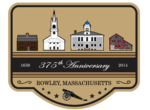Egypt River
Massachusetts river stubsRivers of Essex County, MassachusettsRivers of Massachusetts
The Egypt River is a stream in Ipswich, Massachusetts, United States. The river is formed by the confluence of Bull and Dow brooks below their reservoirs, and in turn joins the Muddy River and then the Rowley River, which empties into the Plum Island Sound. The Rowley River runs through salt marshes, in which it forms a narrow and winding inlet about 5.5 miles (8.9 km) in total length. The name Egypt River is recorded as early as 1635. In early colonial times, it was also termed the North River. It was then a source of herring and smelt, but few have been observed since the 1970s.
Excerpt from the Wikipedia article Egypt River (License: CC BY-SA 3.0, Authors).Egypt River
Paradise Road,
Geographical coordinates (GPS) Address Nearby Places Show on map
Geographical coordinates (GPS)
| Latitude | Longitude |
|---|---|
| N 42.7065 ° | E -70.863216666667 ° |
Address
Paradise Road 111
01969
Massachusetts, United States
Open on Google Maps










